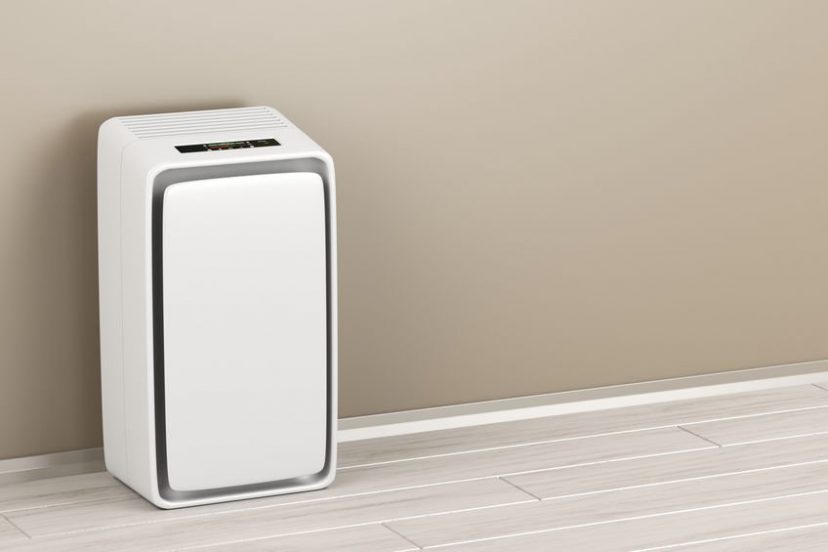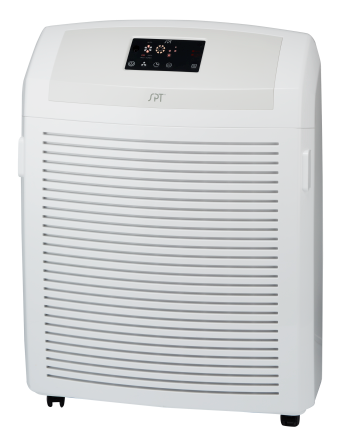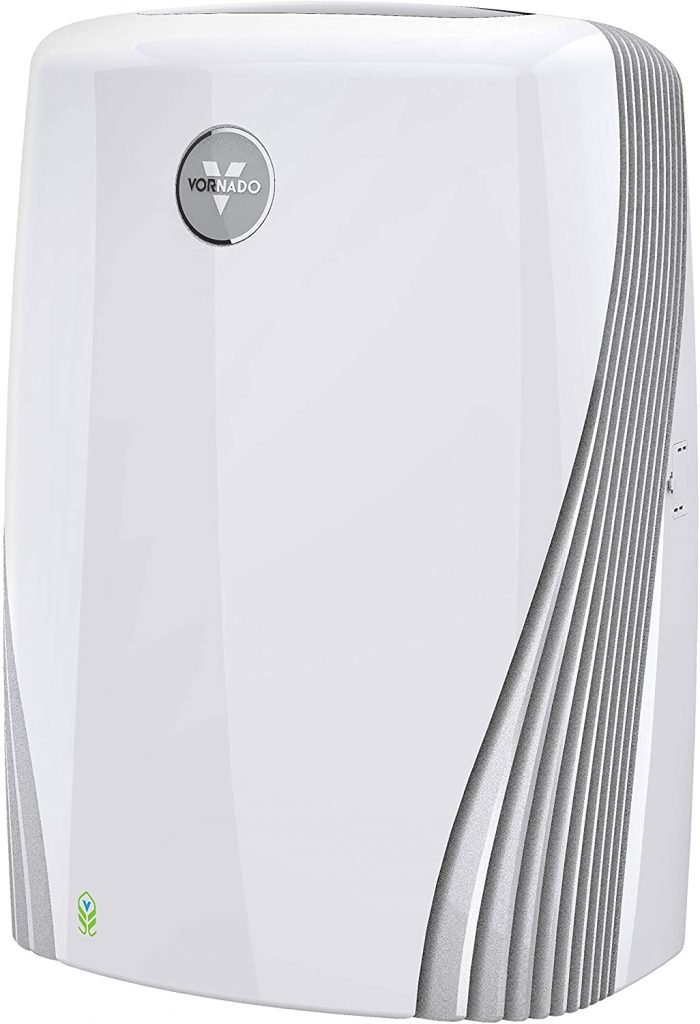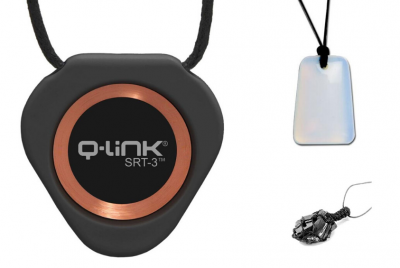When worn correctly, both Bluetooth and wired earbuds offer a lightweight and comfortable way to listen…
The Top 4 Low EMF Air Purifiers of 2022

*We may earn a commission for purchases made using our links. Please see our disclosure to learn more.
If you suffer from asthma or severe allergies, odds are you can’t imagine life without an air purifier. These devices can be lifesavers, removing allergens and environmental toxins from your home’s air, allowing you to breathe easier.
And, while they aren’t often thought of as a significant source of EMF radiation, they are a constant one. Air purifiers are often left on for long hours, meaning they are generating EMF radiation that entire time.
If an air purifier is a must-have item for your home, you may want to consider seeking out a lower EMF option.
Low EMF air purifiers

4. SPT Air Purifier. SPT’s remote controlled air purifier is designed to remove everything from formaldehyde, doors, spores, dust mites, pet dander, and pollen. It uses a HEPA filter that purifies out 99.5% of environmental toxins and pollutants, including particles down to .3 microns in addition to a VOC filter. Both filters are made to last for up to 2,000 hours of continuous usage between replacements. The unit is medium-sized, weighing 40 pounds and its low EMF output is due to its power saving DC motor. SPT’s air purifier includes a timer that can be set between one and eight hours and it is perfect for rooms 465 square feet and under.

3. Boneco Air Purifier. This air purifier from Benoce uses two filters: an activated carbon filter and a standard HEPA filter. It is compatible with a range of HEPA filters, including allergy filters, baby filters (designed to catch particles that little ones are sensitive to), and smog filters for those who live in a heavily polluted environment or who smoke indoors. The purifier has four fan speed levels and is touch controlled with a light system that helps indicate when a filter needs to be changed. It also has a fragrance tray where you can place your favorite essential oils to help distribute the scent throughout your room. Boneco’s air purifier is ideal for rooms up to 600 square feet in size.

2. InvisiClean Sensa Air Purifier. InvisiClean’s Sensa purifier is one of the very few models on the market that actually advertises itself as low EMF. That is because it uses a DC motor that requires 82% less electricity than a comparable AC one. It is also 100% certified ozone free, and uses both a true HEPA filter and an activated carbon pre filter to rid your room’s air of allergens, odors, and other particles. The unit offers six different fan speeds, a protective lock in the event your child or pet presses a button, and a sleep mode that switches off all of the display lights. It’s compact size is perfect for smaller rooms up to 319 square feet. The unit also comes with a unique Smart Air Quality Sensor that uses a color system to indicate your room’s current air quality (red is bad, yellow is intermediate, and blue is good).

1. Vornado PC0375DC Air Purifier. This DC-motor air purifier from Vornado uses UV light to catch any particles missed by the interior HEPA and activated carbon filters. As such, the unit protects against 99.7% of particles that are at least .3 microns large, including basic allergens, pet dander, smoke, odors, and mold spores. This air purifier is powerful but ultimately intended for smaller spaces, including rooms under 258 square feet. The unit’s advanced sensors detect the room’s air quality and adjust fan speed accordingly, and the digital display helps indicate when a filter change is necessary in addition to using a color-coded system to denote air quality. There are eight different fan speeds, and the quick clean option makes maintaining your air purifier a breeze.
Testing your air purifier
To test the EMF output of your air purifier, you need an EMF meter. These devices measure EMF radiation in the air, allowing you to see how much a given device is putting out. You may already have one of these on hand, and so long as yours can detect electric fields and magnetic fields, it will work here, too. We go over EMF meters in greater depth in our guide to the Best EMF Meters For Any Budget, however, if you are in the market for a new one.
To test your air purifier, you will primarily be looking at electric and magnetic fields. Unless you have a high-tech air purifier that uses WiFi or Bluetooth, the unit probably isn’t going to generate much RF-EMF radiation.
First, use your EMF meter to take a measurement with your air purifier unplugged. This will give you an idea of how much EMF radiation is present in the room independent of the air purifier. Be sure to take this measurement in close proximity to your air purifier, as well.
Next, plug your air purifier in and turn it on. Re-take your measurement, and be sure to check out both the electric and magnetic fields present. Ideally, your air purifier should stay within the safe range for both. If the levels are high, note how far away you have to get from the device before they drop off. You will want to try and keep that much distance between the purifier and any high-traffic areas of the room.
Natural, EMF-free air purifiers
The low EMF air purifiers mentioned above may produce less EMF than some other options on the market, but they are not entirely EMF free. If you’re looking to eliminate or further reduce your home’s EMF levels, you may want to consider seeking out some natural alternatives.
Plants
Simply put, plants are one of the best air purifiers out there. They do this all the time in nature, so why not take advantage in your home, too? As an added bonus, plants can promote a sense of well being around the house and caring for them can be highly rewarding, as well.
There are a few types of plants that are especially effective at purifying air. NASA’s Clean Air Study found several types of plants to be effective at removing airborne pollutants and dust particles from indoor air. Now, you need quite a few plants for this to truly mimic an air purifier, and you may not have the space to house 100 different plants — or the capacity to care for them all. But putting a few throughout your home may still improve the overall air quality.
Some types of plants to consider include pothos, English ivy, snake plants, spider plants, and aloe vera (and you can see a more comprehensive list here). These plants are all fairly easy to care for, even for beginners. And most of them are simple to propagate, as well, meaning you can take clippings and essentially turn them into new plants, expanding their air purifying abilities.
Open windows
If you live in a more rural area without a lot of natural pollution or external sources of EMF radiation, opening the windows is an excellent way to let some fresh air in and get the toxins out. Whether you are trying to get rid of an odor, or you simply want to circulate air throughout your home, try opening your windows on nicer days to let some air in.
Obviously, this won’t work for everyone. If you live in a city, for example, you may not be surrounded by air that you particularly want inside of your home. And it’s not practical on cold or rainy days. But, if you’re in a situation where opening the windows makes sense, go ahead and take advantage.
Salt lamp
There is some conflicting information out there about salt lamps, but they are often touted as natural air purifiers. This hasn’t been extensively studied, but may be worth trying if you are looking for natural ways to purify the air in your home.
Salt lamps are essentially a chunk of Himalayan salt with a light inside. The light heats up the salt, causing negative ions to circulate throughout your home. Proponents of salt lamps state that these negative ions can help purify the air. They also have a calming effect and are great as a meditation aid or simply to help you wind down at night.
If you are looking for a salt lamp, Spantik sells their Himalayan Salt Lamp at a budget friendly price point. It’s quite small, standing just eight inches tall. The manufacturer claims it removes allergens and pollutants from your home’s air, helping you breathe better.
Bamboo charcoal
Another way to naturally purify your home’s air is through the use of bamboo charcoal. Charcoal is a natural odor absorber, actually removing odors as opposed to covering them up like an air freshener would do. Bamboo charcoal, in particular, is highly effective at removing both odors and excessive moisture from the air.
One option for bamboo charcoal is Vitscan’s 12-Pack of Bamboo Charcoal Air Purifying Bags. These bags can be hung in any room, or in your car, to naturally absorb odors and purify the surrounding air. One room may require multiple bags, but the charcoal is said to remain effective for up to two years of constant purifying.
Parting thoughts
For those who suffer from allergies or asthma, or who are just sensitive to environmental pollutants, an air purifier is truly a must-have item. If you are concerned about EMF radiation exposure, however, you may want to seek out a low EMF air purifier, or consider natural air purification methods.



